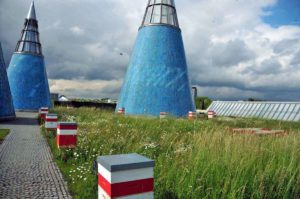- Softcover : 148 Seiten
- Verlag: sierke VERLAG – Sierke WWS GmbH
- Autor: Sascha Brinker
- Auflage: 1. Auflage, erschienen am 30.03.2021
- Sprache: Deutsch
- ISBN-10: 3-96548-092-8
- ISBN-13: 978-3-96548-092-6
- Größe: 210,0 x 148,0 cm
- Gewicht: 285 Gramm
Erhöhung der Reaktivität von Isocyanatklebstoffen fu?r die Anwendung in der Holzwerkstoffindustrie
Autoren: Sascha Brinker42,00 €

HONIGHÄUSCHEN (BONN) – Urea-formaldehyde resins are mainly used for the production of wood-based materials, as they are inexpensive and easy to process and have high mechanical and technological properties. The disadvantages are the relatively low hydrolysis stability and the emission of formaldehyde, which is classified as carcinogenic. Since the legal guideline values for emissions have been decreasing for years, urea-formaldehyde resins with adapted molar ratios are produced to meet the requirements. The mechanical-technological properties decrease, so that reinforcing components such as melamine, phenols or isocyanates have to be used. If isocyanates are added to urea-formaldehyde resins, both adhesive systems accelerate the curing reaction. This effect has been known for some time and is used industrially; the underlying mechanism of this accelerated reaction is not yet fully understood. In the present work, the reaction mechanism between urea-formaldehyde resins and isocyanates was first investigated using laboratory methods. After identification of decisive factors, these were transferred to an acceleration of pure isocyanate adhesives, since such adhesives require relatively long pressing times in industry. In order to verify the results of the laboratory tests, wood-based materials (micro veneer bonding, veneer plywood, chipboard, fibreboard and insulation boards) were produced on a pilot scale and the resulting mechanical and technological properties investigated. In the first part, the relationship of mutual acceleration was investigated using established laboratory methods. Differential scanning calorimetry, gelation times, pot life, pH determination and scanning electron microscopy (SEM – ESEM) proved that a reaction between the adhesives is unlikely. The latent ammonium sulfate hardener was identified as the decisive factor. Due to its high nucleophilicity, the ammonia contained reacts earlier with the reactive groups of the isocyanate than with the free formaldehyde of the urea resin (formation of hexamethylenetetramine). The balance between ammonia and ammonium is shifted to the ammonia side and protons are released. These early generated protons catalyse the condensation reaction of the urea resin and cause a faster curing. The isocyanate also accelerates, since the reaction of ammonia with the functional groups is faster than the cross-linking via water as a nucleophilic agent typical in wood-based panel production. In the second step, seven selected ammonium salts were tested for their suitability for accelerating the curing of isocyanates. These were two thermally labile salts (ammonium VI carbonate and ammonium hydrogen carbonate) and five compounds based on the chemical equilibrium between ammonia and ammonium in aqueous solution (ammonium acetate, ammonium chloride, ammonium nitrate, ammonium sulphate, diammonium hydrogen phosphate). For the evaluation differential scanning calorimetry, gelation times, pot life, pH- value were used. It was shown that the carbonates react very quickly and have a high affinity to foaming. The effect of the other salts depended on the acid strength (pKa value) of the acid resorption. The higher the pKa value, the less the compounds contributed to a faster reaction. With solid-state NMR and isotope-labelled ammonia, its incooperation into the isocyanate polymer could be demonstrated. In order to test the practicability of the various salts, various wood-based materials were produced in the third step. Using the Automated Bonding Evaluation System, the general feasibility of the carbonates and micro veneer bonding was tested and positively evaluated. This was followed by the production of veneer plywood with all selected salts to validate the laboratory results. This confirmed the data already collected. Ammonium carbonates, ammonium acetate and diammonium hydrogen phosphate were selected for the production of fibreboards and chipboards. A wide variation of the pressing parameters (pressing time and pressing temperature) and the subsequent determination of the mechanical-technological properties of the plate-shaped materials could prove the postulated acceleration of the hardening reaction. The characterizing values were determined on the basis of bending strength and modulus of elasticity, transverse tensile strength and boiling transverse tensile strength, shear tensile strength and water absorption. The tests carried out in this study suggest, that urea-formaldehyde resins and isocyanates do not form common networks and that the mutual acceleration is based on the presence of latent ammonium hardeners. For the acceleration of pure isocyanates by different ammonium salts a theory could be developed and proved by numerous investigations. Ammonium acetate and diammonium hydrogen phosphate proved to be the most potent accelerators, the carbonates cannot be recommended due to their strong tendency to foam; special applications are conceivable. In the production of wood-based materials, a press time reduction of up to 35 % could be achieved with equivalent or better mechanical-technological properties compared to the reference. This enables energy savings that cannot be neglected and an increase in production capacity with relatively low financial investment.
Über „Erhöhung der Reaktivität von Isocyanatklebstoffen fu?r die Anwendung in der Holzwerkstoffindustrie“
Das vorliegende Sachbuch zu Themen aus Umwelt und Natur „Erhöhung der Reaktivität von Isocyanatklebstoffen fu?r die Anwendung in der Holzwerkstoffindustrie“ wurde erarbeitet und verfasst von Sascha Brinker. Dieses Sachbuch erschien am 30.03.2021 und wurde herausgegeben von sierke VERLAG – Sierke WWS GmbH.
Bücher wie „Erhöhung der Reaktivität von Isocyanatklebstoffen fu?r die Anwendung in der Holzwerkstoffindustrie“ sind im Onlineshop des Honighäuschens bestellbar. Online bestellte Fachbücher zur Imkerei und zu anderen Themen der Umwelt und des Artenschutzes sind zu den üblichen Öffnungszeiten auch direkt im Buchladen Bundesamt für magische Wesen in Bonn, der Stauhauptstadt von Nordrhein-Westfalen abholbar und werden auf Wunsch verschickt.
Das Thema Bienensterben, Rückgang von Insekten und allgemeines Artensterben ist in aller Munde und das Honighäuschen als frühere Bioland Imkerei hat sich von Anfang an daran beteiligt. Mehr als 35 Jahre Imkereierfahrung nahmen ihren Anfang 1982 mit den ersten eigenen Bienen.

Der zehnjährige Junge, der 1977 einem Hamburger Imker über die Schulter schaute; der Fünfzehnjährige, der mit der Imkerei in Zeiten begann, in denen es noch keine Varroamilbe gab; der achtzehnjährige Fahrschüler, der lernte, dass man die Windschutzsscheibe seines Autos nach einer längeren Fahrt von Insekten säubern muß; der zwanzigjährige Student, der für seine Bienen einen Platz in Bonn suchte; der dreißigjährige Berufsimker, der seinen Bienen quasi eine Gutenachtgeschichte erzählte und sich den Kopf zerbrach, wie man die Umwelt mit ihren Bienen, Wespen, Schmetterlingen und andere blütenbesuchenden Insekten vor den Machenschaften der Agrargiftindustrie und der Gleichgültigkeit agrarindustriehöriger Politiker schützt; der Imker, der nicht nur auf dem Weihnachtsmarkt Bonn die Öffentlichkeit suchte, um bei Führungen an den Bienen auf dem Dach der Bundeskunsthalle zu erleben, dass Kinder (und deren Helikoptermuttis!) Angst vor Schmetterlingen hatten, bis hin zum Begleiter von Forschungsprojekten zu den Riesenhonigbienen Nepals oder den Killerbienen Afrikas, stellt fest, dass etwas sehr im Argen liegt in unserem Umgang mit der Umwelt.
Es sollte jedem bewußt sein, dass die Haltung „Natur ja, aber bitte woanders!“ nicht in Ordnung ist. Machen wir so weiter, werden wir Insekten und andere Tiere irgendwann nur noch in Foto- und Bildbänden finden.
Die wunderschöne Welt der Natur

In unserem Online-Buchshop finden Sie viele Bücher wie „Erhöhung der Reaktivität von Isocyanatklebstoffen fu?r die Anwendung in der Holzwerkstoffindustrie“, die Ihnen die fantastische Welt der Bienen, Wespen, Ameisen, Hornissen und Schmetterlinge sowie anderer Insekten näherbringen.
Aber nach wie vor stehe ich Ihnen auch gern zu einem Gespräch oder zu einer Beratung im Umgang mit Bienen, Wespen, Hornisse, Wildbienen und Hummeln zur Verfügung, wenn Sie Fragen haben. Besuchen Sie uns in Bonn im Bundesamt für magische Wesen.
Und natürlich gibt es auch weiterhin Honig, Bienenwachskerzen und Met bei uns und zwar das ganze Jahr – nicht nur zu Weihnachten.
| Gewicht | 285 g |
|---|---|
| Größe | 210 × 148 cm |





Bewertungen
There are no reviews yet